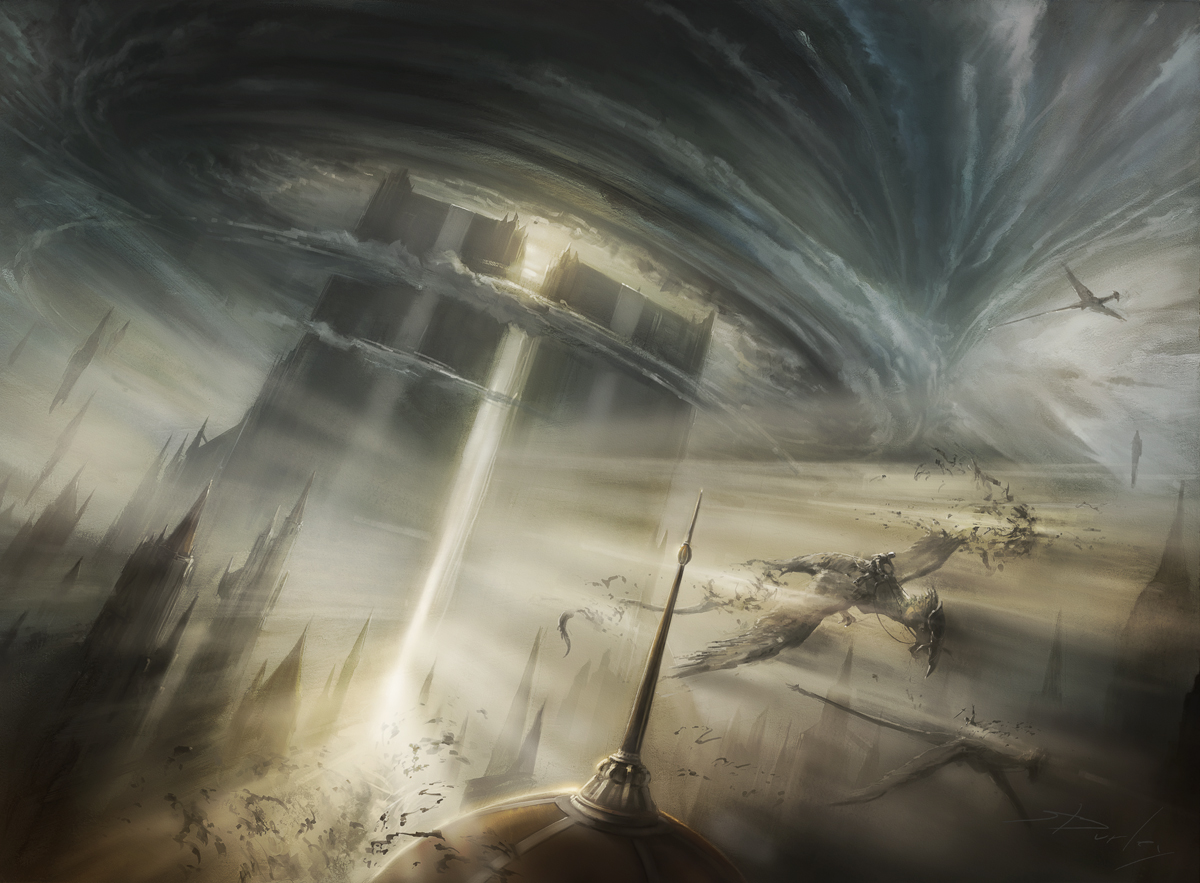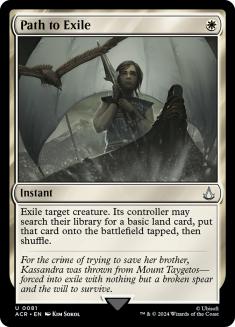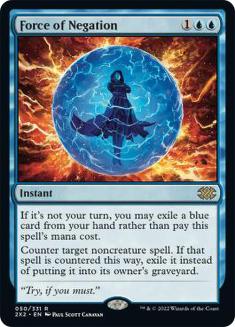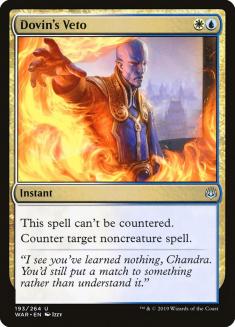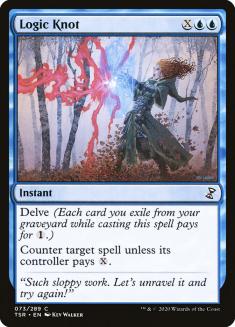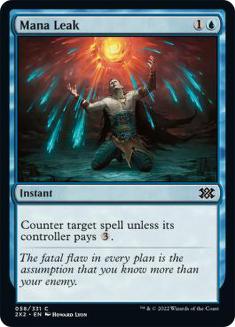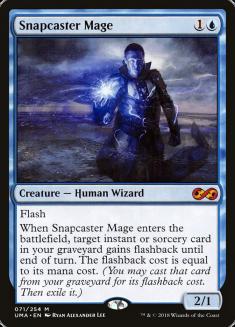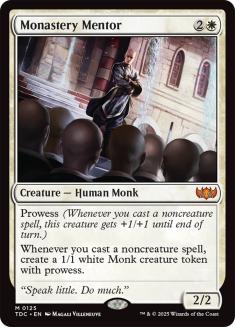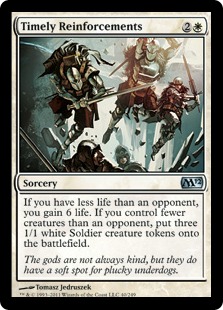A Modern Super Qualifier passed by last Sunday, capping off at 413 competitors seeking a piece of tournament glory. Some of the best players were seen in the Top 32, including my buddy Tommy Ashton (stainerson) and Logan Nettles (Jaberwocki). These Modern events on Magic Online are no joke, as grinders make up a large percentage of the remaining players on the older program.
I’m guilty of it too, spending more time on MTG Arena, only visiting Magic Online for the older formats. If it’s Limited, Standard, or Historic, I enjoy the newer interface (and I can play on my phone!). Since we’re talking about Modern, there’s no better place to analyze the metagame than these giant qualifier tournaments that have very good players duking it out on a regular basis.
Amulet Titan won the event but was not the most-represented deck in the Top 32. Selesnya Company took that title, with seven copies, but zero made the Top 8. The rest of the Top 32 had a diverse spread, with no other deck having more than three copies in the final stretch.
The metagame was, as I expected for the most part, a bunch of Selesnya Company, with some Izzet Prowess, Amulet Titan, Jund Death’s Shadow (Lurrus), and Five-Color Niv-Mizzet (Yorion) to round out the top tables. It warms my heart to see the sporadic Jund-style and control decks represented, but they’re not built to handle midrange threats, combos from Selesnya Company, and the aggressive elements of Izzet Prowess.
As different as Modern is now, some aspects never change. The advantage of running a linear deck that doesn’t care what the opponent is up to is huge, which is why they have always dominated the format. Here and there we see a control deck take a tournament down; however, those events are few and far between.
The frustrating necessity to play a bunch of removal, sweepers, and lifegain pieces to combat aggro, while all are dead against a chunk of the field, is ever-present. Luckily for control enthusiasts, the combo deck of the format still depends on creatures, making the dynamic change slightly.
Path to Exile is a great card against Selesnya Company and Amulet Titan. We all know one-mana removal is strong against most of the competitive field, but it’s huge when that removal hits combo and big mana decks. The quantity of decks that require cheap removal has dictated where I’m landing with control, and at first it led me to Jeskai Control.
Jeskai Control has access to more spot removal, all of it cheap, some with lifegain attached. These removal spells are mediocre against combo, control, and big mana decks, so the decision to add red is crucial. This qualifier made it quite clear that the format is much too diverse to lean on Jeskai Control moving forward.
Azorius Control is the superior call when Path to Exile and a couple of Ousts can do the trick, while depending on Supreme Verdict to clean up afterwards. One of the big reasons that Azorius Control has struggled in the current metagame is the lack of dedication to the sweeper slot and that’s about to change for this battle-hardened mage.
Creatures (3)
Planeswalkers (7)
Lands (25)
Spells (25)

To the untrained eye, this may look like every other Azorius Control deck out there. More experienced competitors understand the effect changing five or six cards has on the deck’s gameplay. These modifications are felt the most in decks that swiftly get through their maindeck, with consistent outlets for card advantage.
Having access to Teferi, Time Raveler; Teferi, Hero of Dominaria; and Jace, the Mind Sculptor is enough to draw one- and two-ofs consistently. For this reason, most builds of Azorius Control in Modern have skimped on sweepers and have been relatively successful. The biggest issue is not missing out on Supreme Verdict completely; it’s the inability to draw multiple copies throughout the course of a match.
The common consensus for sweepers in the past is having one on Turn 4 does the trick and all others are bonuses. That reality has diminished, as the creatures on the opposing side of the battlefield have become much stronger. In Modern, a Supreme Verdict must be fired off to kill a single Death’s Shadow, leaving the Azorius Control player in dire condition if more are required.
The penalty for running too many sweepers is drawing them in multiples against the wrong matchup, which was always a concern. There are some decks that did not need a critical mass of creatures (or any creatures for that matter). Drawing too many dead cards has always been a problem for control more than others, but a Modern staple has changed the deck building dynamic completely.
Force of Negation has opened the door to play as many Supreme Verdicts as we want to in Azorius Control. The matchups where Supreme Verdict falls flat, Force of Negation excels. It pains me to exile a strong blue card in Modern to stop a Karn Liberated, but it feels wonderful to pitch a dead sweeper. For this reason alone, the number of Supreme Verdicts in Azorius Control should never drop below three unless the metagame drastically shifts.
Izzet Prowess, white-based aggro, Selesnya Hexproof, Jund Death’s Shadow (Lurrus), and Selesnya Company require a sweeper, while it remains strong enough against midrange decks. There are even sideboarded games against Azorius Control where I leave one in, knowing multiple Monastery Mentors are heading my way. Supreme Verdict’s utility in Modern is greater than it has been in a while, making me confidently crank the number up to three for the foreseeable future.
To address the current metagame of Modern, traditional Azorius Control needed a few more modifications. Oust is the best supplemental spell to Path to Exile and has been for a while. My removal package usually included one copy to act as the fifth one-mana removal spell, but the format warrants some additional support. The number of creatures that opposing forces summon on Turn 1 is at a high point, making Oust the most satisfying follow-up play.
Condemn and Winds of Abandon have floated around as the backup to Path to Exile for a while, but both are weak against early plays in unique ways. Condemn does not apply to a Sakura-Tribe Scout or Dark Confidant, while Winds of Abandon is a sorcery that ramps the opponent. Yes, Path to Exile provides additional land like Winds of Abandon; however, the instant-speed, cheaper removal spell is well worth it. The three Supreme Verdict and six one-mana removal spells are exactly where I want to be to take on the current Modern metagame.
I adjusted the blue disruption package for this version of Azorius Control. Spell Snare is a weak option when there are already two Ousts to assist with early-game pressure. Most decks, outside of big mana, have targets for it, but there are better tools at our disposal. I added Dovin’s Veto to join forces with Logic Knot, Mana Leak, Archmage’s Charm, Cryptic Command, and Force of Negation, as the best decks in the format have some tough-to-beat spells.
Although Selesnya Company has one real noncreature threat, it’s a doozy. Letting Collected Company get through is disastrous and Dovin’s Veto helps fend it off. This is where Force of Negation struggles, being unable to combat a noncreature spell for free at the end of your turn. I have liked it so far and think the overall blue disruption package is optimally sculpted to handle what Modern has been throwing at us lately.
I have not altered the number of planeswalkers in this version of Azorius Control. The traditional three copies of Teferi, Time Raveler along with two each of Teferi, Hero of Dominaria and Jace, the Mind Sculptor have worked like a charm.
For those of you who hate the three-mana Teferi, try to remember how many times it has been banned in the last year. Modern is among the last bastions for one of the greatest of all time and it remains a dominant piece of the control victory plan. Having a Time Raveler land, draw a card, and remain on the battlefield is usually an easy win.
This setup is not hard, as the first two turns have a heavy dose of disruption for most threats an opponent can reasonably deploy. I’ve played a few combo decks in Modern while I rest my control mind, and each of them splashes white to include Teferi, Time Raveler for the same reasons. Having the ability to ignore all instant-speed disruption on your own turn is huge for combo and good for control as well.
The rest of the maindeck is as stock as it comes and for good reason. Snapcaster Mage remains the only creature in Azorius Control, aside from some adventurous deckbuilders tossing in a Vendilion Clique for spice. I may be getting boring in my old age, but Snapcaster Mage is the only exception to my no-creature rule in Modern control decks.
Opt is the card draw spell that pairs with Snapcaster Mage the best and easily replaced Serum Visions a long time ago. I remember going to social media war with Modern fans who were convinced Serum Visions is the superior option. Azorius Control, like most other decks with Snapcaster Mage, operates at instant speed for most of the match, only tapping out for a planeswalker. Even these tap-out turns are a bit auspicious, as Force of Negation flies out of nowhere to stop an opponent trying to take advantage of the shields being down.
The iconic cards of Azorius Control, Cryptic Command and Celestial Colonnade, have survived the test of time. Even though these two get ridiculed when times are rough for control, they remain vigilant in their duty to keep Modern players honest. Azorius Control likely could operate without either of these two cards, but it feels disrespectful to remove them from the lineup.
Cryptic Command is still too versatile to bench, providing hard disruption and card draw when needed, while Celestial Colonnade gives an attacking option when opposing planeswalkers need to be vanquished. Cryptic and Colonnade may not be at the top of the power rankings, but they both add more dynamic lines of play to Azorius Control.
The only change to the manabase was the addition of Hengegate Pathway, which other players have been hesitant on adding. It’s much better than its competitor, Glacial Fortress, and anyone who gets some reps in with it should come to the same realization. Those hands with Celestial Colonnade and Glacial Fortress hurt the soul, making Hengegate Pathway the feel-good choice.
The sideboard has changed to address the current Modern metagame. After this article gets published, expect some sideboard updates on Twitter, as it’s very difficult to hold back from tinkering after further matches.
Most Azorius Control sideboards look like this, with a bunch of one- and two-ofs. I discussed the likelihood of drawing these in any given game, allowing us to get away with a small amount of hate for each deck. There’s also a need to diversify the disruption, removal, and threats to cover the many bases of the format.
Monastery Mentor is the sideboard plan when the opponent’s removal exits and has been very effective at sealing games for months. The rest of the sideboard is full of additional counterspells, three graveyard-hate cards that are split between Surgical Extraction and Rest in Peace, removal, and Timely Reinforcements to save the day against red-based aggro. The greatest hits are still here, but the numbers have significantly changed since the qualifier ended on Sunday.
I’m confident that Azorius Control is superior to Jeskai Control in this metagame and that it’s currently favored against the best decks Modern have to offer.

